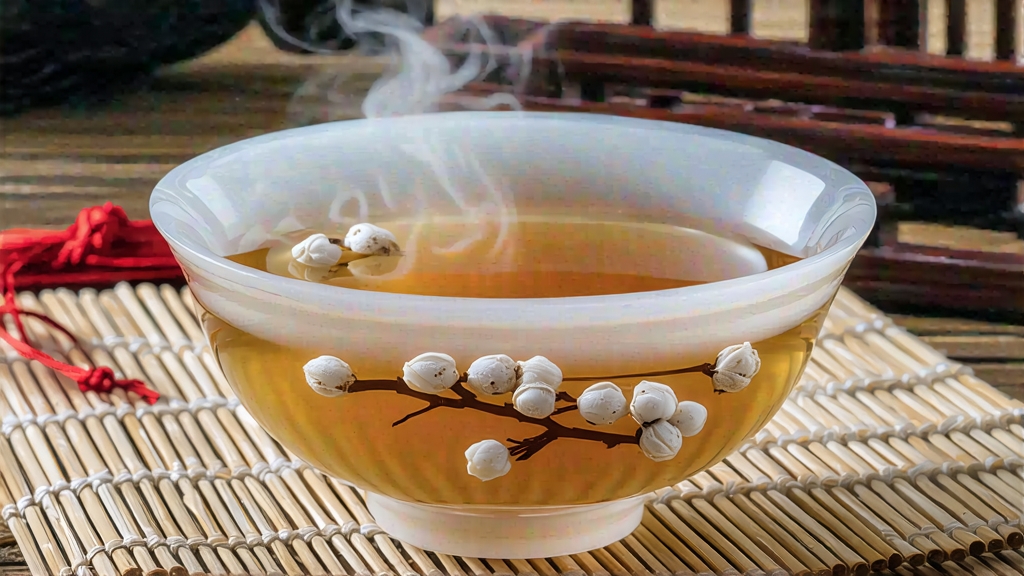
If green tea is the fresh-faced youth of Chinese tea and pu-erh the venerable sage, then Bai Hao Yin Zhen—literally “White Hair Silver Needle”—is the moonlit poet who arrives quietly, stays briefly, and leaves a memory that outlasts the night. Among all white teas, none carries more mythic elegance or demands more disciplined craft. International drinkers often meet white tea through bagged “silver needle” blends, yet the original, single-origin Bai Hao Yin Zhen remains a guarded secret of Fujian’s northern coast, a leaf so tender that it is picked only during a climatic window of less than ten spring days. To understand it is to step into a world where time is measured not in minutes but in dew-points, where the scent of fresh-cut bamboo mingles with sea breeze, and where the finished tea still contains the chill of the dawn that bore it.
History: From Imperial Tribute to Global Muse
Song-era chronicles first mention “white down tea” presented at the Huizong emperor’s court in 1107 CE, but the name Bai Hao Yin Zhen does not appear until the late Qing, when improved roadways allowed Tai Mu mountain farmers to deliver their finest buds to Fuding’s port. Foreign merchants mistook the fuzzy tips for silver slivers, coining the export label “Silver Needle.” By 1891 it outsipped green tea in London’s finest hotels, yet the 20th century’s wars nearly erased the cultivar. Revival began in 1963 when the Fujian Academy of Agricultural Sciences re-grafted ancient Da Bai mother trees, and today the tea enjoys Protected Geographic Indication status; only buds plucked within Fuding and Zhenghe counties may legally bear the name.
Cultivar & Terroir: Two Gardens, One Spirit
Two large-leaf tea trees share the honor: Fuding Da Bai and Zhenghe Da Bai. The former yields longer, sturdier buds with a downy sheath that brews into a nectar of light cantaloupe and marine air; the latter produces slightly shorter, plumper needles tasting of steamed rice flower and wet slate. Both sit just back from the East China Sea, where subtropical humidity meets mineral-rich red-yellow soils. Night temperatures plunge thanks to the Daiyun mountain range; the diurnal swing forces the plant to store amino acids during the day and slow oxidation at night, creating the tea’s signature cool sweetness.
Plucking: A Race with the Sun
Work begins when the last spring frost is memory but before the Qingming festival, usually between March 15 and 25. Only the unopened bud, ideally 1.5–2.0 cm and shaped like a baroque pearl, is taken. Experienced pickers use a “twist-lift” motion that snaps the stem without bruising; any compression triggers premature oxidation and forfeits the grade. A full kilogram of finished Silver Needle requires roughly 30,000 buds, all picked before 9 a.m. while dew still acts as a natural antioxidant film.
Craft: Where Withering Becomes an Art
Unlike other teas that call for pan-firing or rolling, Bai Hao Yin Zhen is shaped solely by air. The buds are laid 2 cm thick on bamboo trays stacked inside a sun-warmed corridor with latticed walls. For 36–48 hours they rest under a choreography of wind, shade, and indirect sun; masters “read” the leaf by touch—when the down feels like dry silk yet the core retains 8 % moisture, the tea is moved indoors for a final 4-hour rest at 28 °C. No machine can replicate this intuition; too long and the tea becomes flat, too short and grassy astringency lingers. The result is a naturally oxidised level of 5–10 %, giving a pale liquor that hovers between green and black tea in chemical soul but belongs to neither.
Flavour Lexicon: What to Expect in the Cup
Dry aroma: dried alfalfa, white peach skin, and a whisper of vanilla pod. Wet leaf after the first infusion: steamed edamame and fresh lychee. Liquor colour: very pale champagne with a greenish rim. Texture: glycerine-smooth, almost weightless, then a cooling menthol lift at the back palate. Finish: sweet mineral note reminiscent of wet granite, lasting up to five minutes. With age the tea darkens to antique gold and